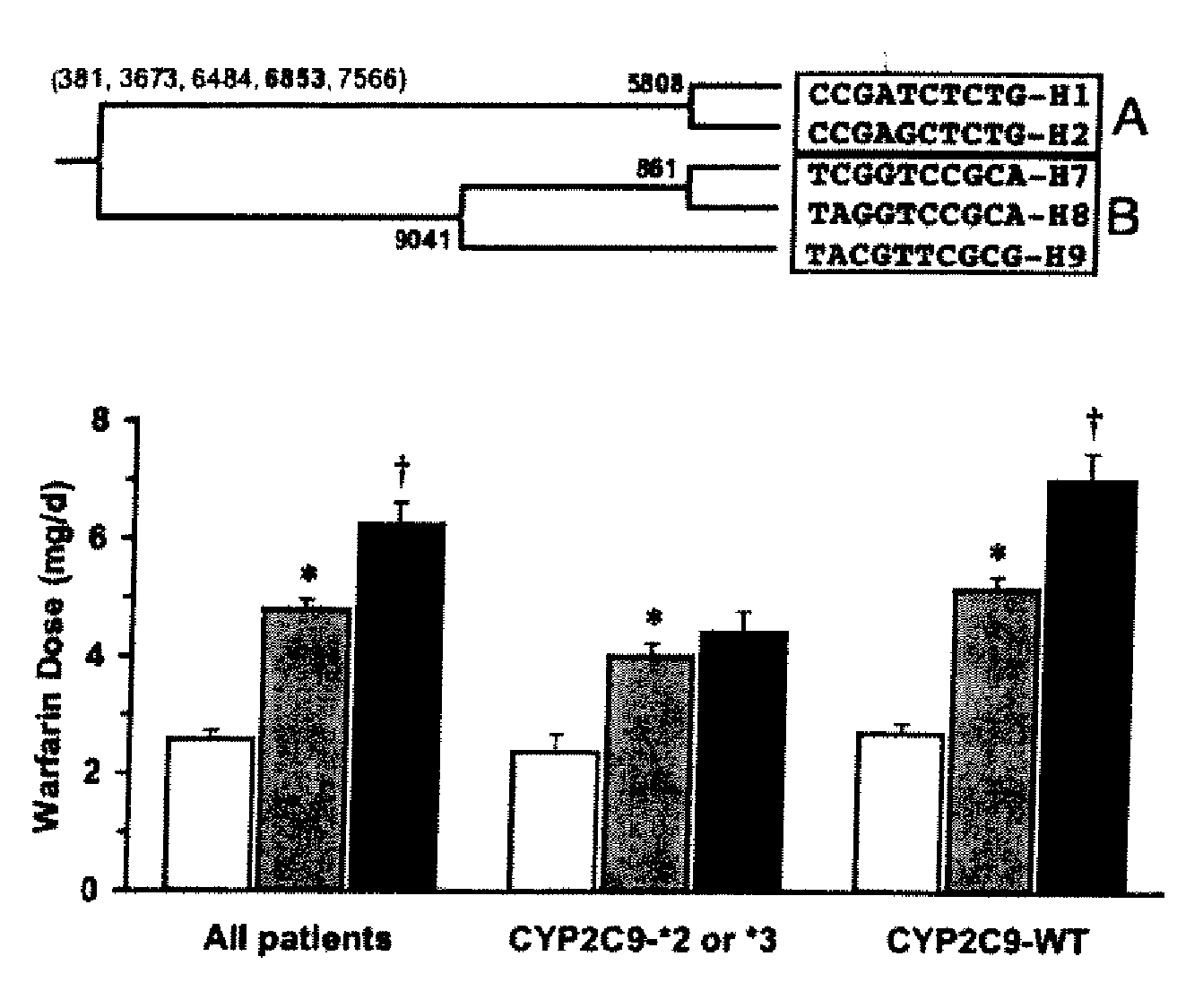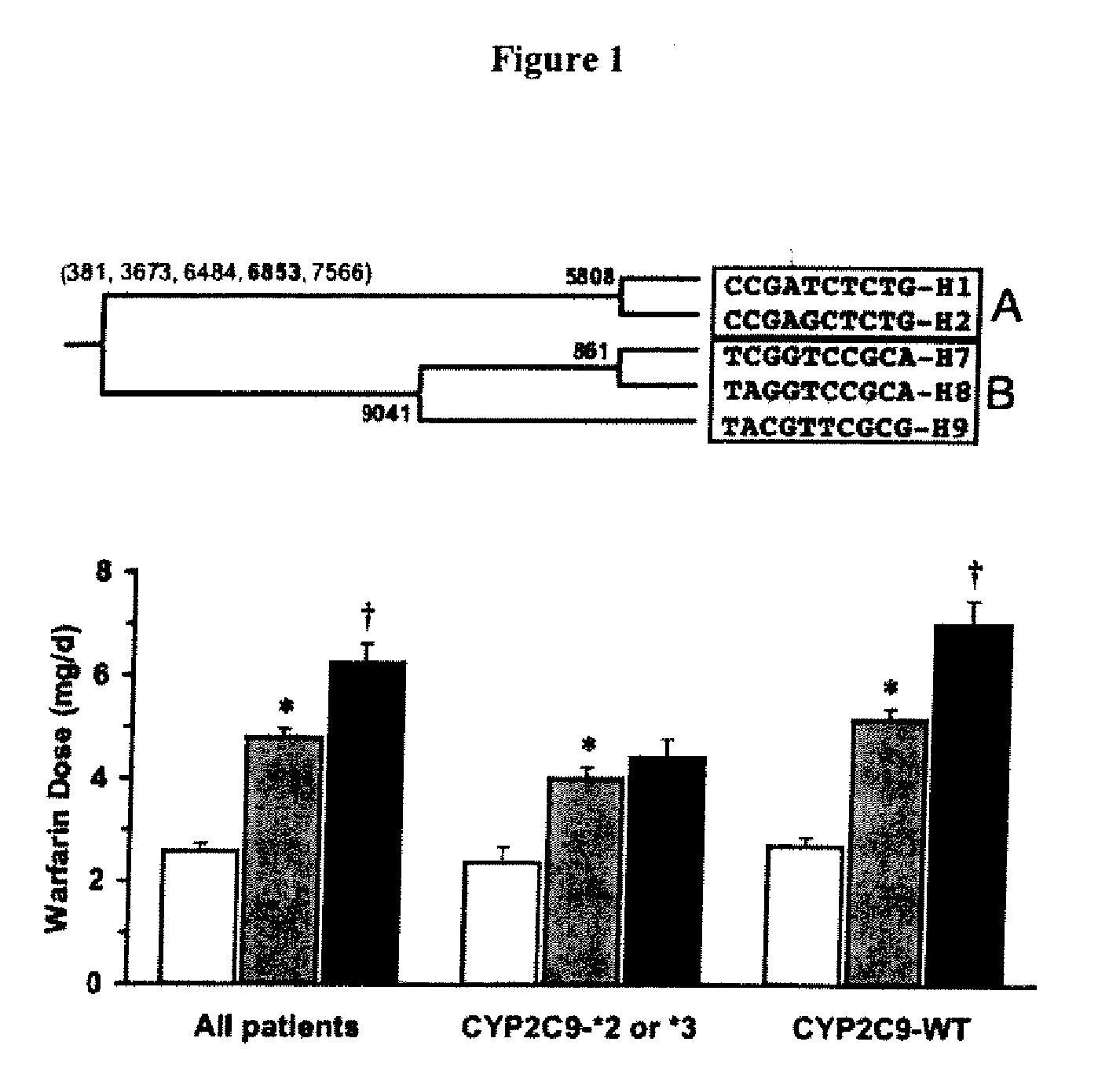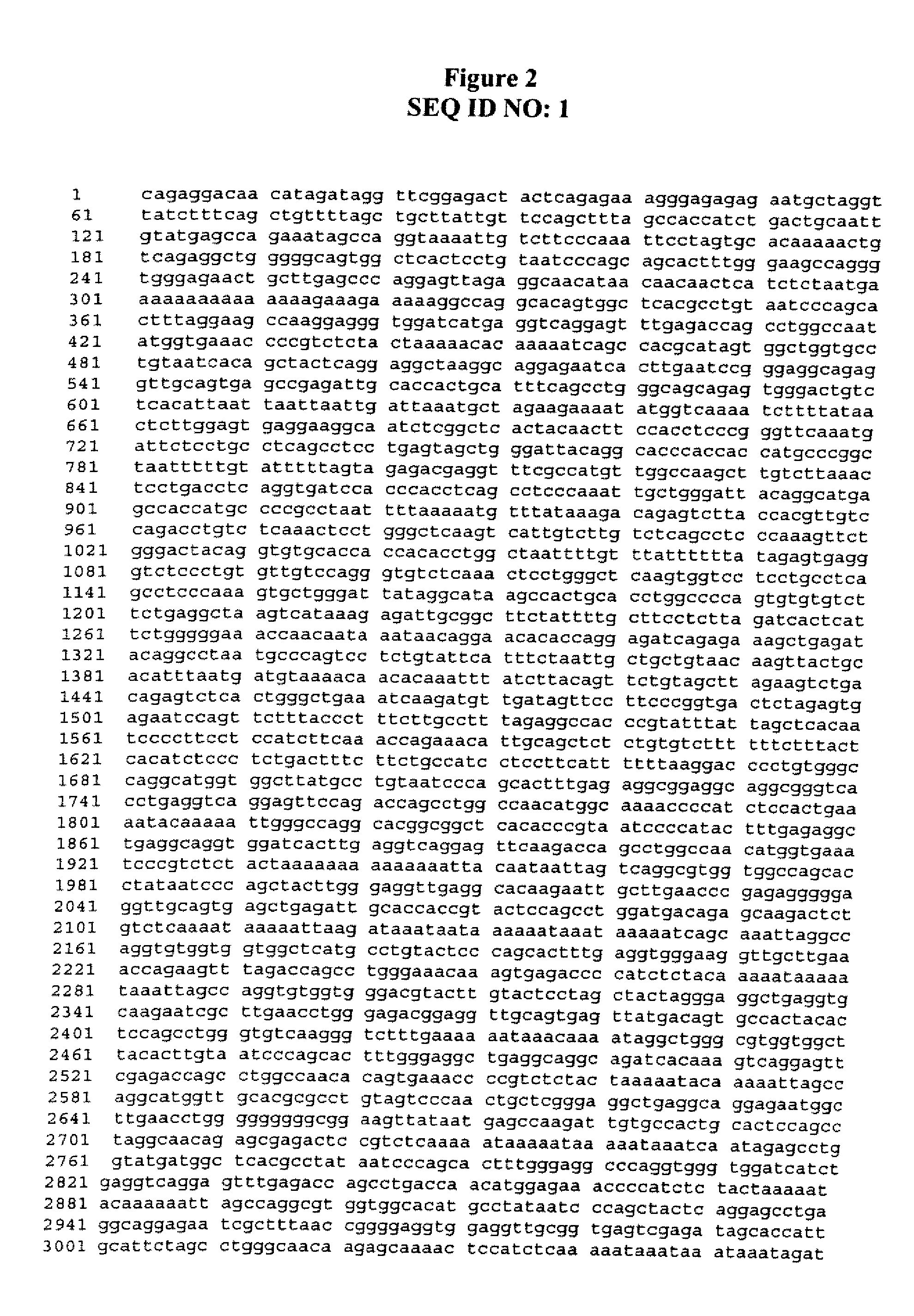Methods and compositions for predicting drug responses
a drug response and composition technology, applied in the field of methods and compositions for predicting drug responses, can solve the problems of drug doses being less effective than desired in some individuals, serious injury or even death, and powerful toxic effects in patients
- Summary
- Abstract
- Description
- Claims
- Application Information
AI Technical Summary
Benefits of technology
Problems solved by technology
Method used
Image
Examples
example 1
VKORC1 Polymorphisms
[0111] This Example describes the association between VKORC1 polymorphisms and optimal Warfarin dosages.
A. Methods
Clinical and Control Subjects
[0112] The initial European American clinical patients used in this study have been previously described (Higashi et al., Jama 287, 1690-8 (2002)) as have most of the European American patients in the replication study (Gage et al., Thromb Haemost 91, 87-94 (2004)). All control DNA population samples were purchased from the human variation collections and the CEPH pedigree samples at the Coriell Cell Repository. The Asian American samples consisted of 96 individuals from the HD100CHI panel (Han People of Los Angeles), 10 Southeast Asians (HD13), 7 Chinese (HD32), and 7 Japanese (from the HD07 panel). The 96 European American samples were selected from the HD100CAU panel with the remaining 23 individuals selected from the parental generation of the CEPH families (for more information on these samples see Table 4). The...
PUM
 Login to View More
Login to View More Abstract
Description
Claims
Application Information
 Login to View More
Login to View More - R&D
- Intellectual Property
- Life Sciences
- Materials
- Tech Scout
- Unparalleled Data Quality
- Higher Quality Content
- 60% Fewer Hallucinations
Browse by: Latest US Patents, China's latest patents, Technical Efficacy Thesaurus, Application Domain, Technology Topic, Popular Technical Reports.
© 2025 PatSnap. All rights reserved.Legal|Privacy policy|Modern Slavery Act Transparency Statement|Sitemap|About US| Contact US: help@patsnap.com



